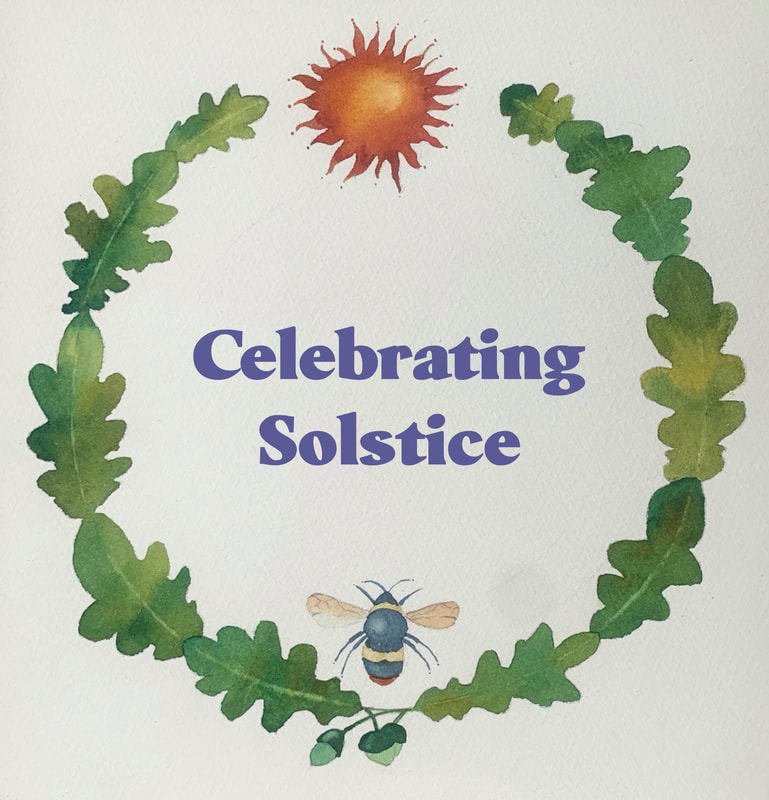A few things to try at Summer Solstice:
Light a fire with friends/family and jump over it (carefully!). Have fun. Sing. Dance. Play. Eat. Get up early to watch the Solstice sunrise. Take a picnic breakfast of your favourite foods and fruits. Lie on the earth, and feel the union between the earth, your skin. and the sun. Drink Mead. Bees are at the pinnacle of honey making and mead was considered to be the nectar of the Gods, liquid sun, which has life-giving and magical properties. When you drink it think with gratitude of all the goodness in your life. Create a Litha altar - an arrangement of natural objects, oak leaves and herbs. Focus on the colours of yellow, orange and gold. SYMBOLS OF SOLSTICE PLANT: SAINT JOHN’S WORT Hypericum Perforatum Saint John’s Wort, also sacred to Saint Joan, is the epitome of Midsummer with its sunny yellow blooms, redolent with healing properties, and its many associations with the Sun and the element of fire. It flowers at the Solstice and is customarily gathered on the 24th June, when both the Saints celebrate their feast days. It features in the foreground of Paul Nash's iconic painting The Landscape of the Summer Solstice. Traditionally bringing this herb into your home on Midsummer provides protection from evil spirits, illness and fire. It would therefore be an auspicious herb to weave into a summer wreath for your door. You might also want to place some St John's Wort beside your bed, as it's strongly associated with dream magic and prophetic dreaming. PLEASE NOTE: Saint John’s Wort has been used in herbalism for centuries. It contains powerful constituents which can cause reactions and interact with prescribed medication. Please do not use medicinally without referring to a qualified medical herbalist. TREE: OAK Quercus The mighty Oak is the sentinel of Midsummer. It’s Celtic name ‘Duir’ means doorway; standing as a portal between the seasons. The high-point of any walk is to find a huge hollow-oak in the landscape; you can literally step into that portal. Perhaps because of its tendency to stand alone in the land, it is particularly prone to lightning strikes, but also has a remarkable ability to recover and regenerate. It was this characteristic that led to acorns being regarded as lucky charms and the old custom of placing acorns in your window to protect your house and ward off lightning strikes. There is the wonderful tale of the Oak King and the Holly King, when the forces of summer and winter battle as the seasons turn. By Midsummer the Oak King is at the pinnacle of his strength and the Holly King at his lowest ebb. The Oak King will rule, until Holly regains his vigour in the Autumn, and the eternal cycle continues. With thanks to both Kay Aldred and Sarah Heagney who contributed to this blog.
0 Comments
Leave a Reply. |
AuthorJosie Beszant and/or Ian Scott Massie, both artists from Masham North Yorkshire, Uk. Archives
May 2024
Categories |
Happy House Masham, 24, Market Place, Masham, North Yorkshire. HG4 4EB


 RSS Feed
RSS Feed